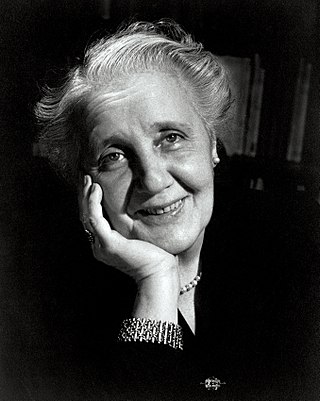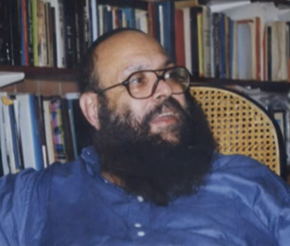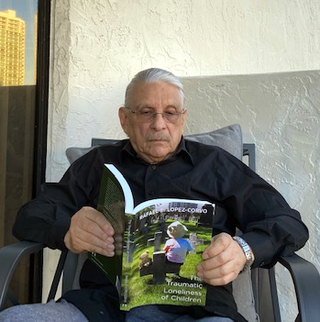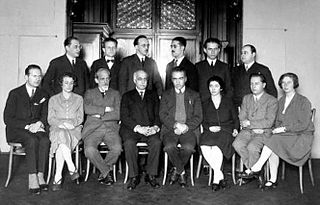Psychoanalysis is a set of theories and therapeutic techniques that deal in part with the unconscious mind, and which together form a method of treatment for mental disorders. The discipline was established in the early 1890s by Sigmund Freud, whose work stemmed partly from the clinical work of Josef Breuer and others. Freud developed and refined the theory and practice of psychoanalysis until his death in 1939. In an encyclopedic article, he identified the cornerstones of psychoanalysis as "the assumption that there are unconscious mental processes, the recognition of the theory of repression and resistance, the appreciation of the importance of sexuality and of the Oedipus complex." Freud's colleagues Alfred Adler and Carl Gustav Jung developed offshoots of psychoanalysis which they called individual psychology (Adler) and analytical psychology (Jung), although Freud himself wrote a number of criticisms of them and emphatically denied that they were forms of psychoanalysis. Psychoanalysis was later developed in different directions by neo-Freudian thinkers, such as Erich Fromm, Karen Horney, and Harry Stack Sullivan.

Wilfred Ruprecht Bion DSO was an influential English psychoanalyst, who became president of the British Psychoanalytical Society from 1962 to 1965.

Melanie Klein was an Austrian-British author and psychoanalyst known for her work in child analysis. She was the primary figure in the development of object relations theory. Klein suggested that pre-verbal existential anxiety in infancy catalyzed the formation of the unconscious, which resulted in the unconscious splitting of the world into good and bad idealizations. In her theory, how the child resolves that split depends on the constitution of the child and the character of nurturing the child experiences. The quality of resolution can inform the presence, absence, and/or type of distresses a person experiences later in life.
Henry James Samuel Guntrip was a British psychoanalyst known for his major contributions to object relations theory or school of Freudian thought. He was a Fellow of the British Psychological Society and a psychotherapist and lecturer at the Department of Psychiatry, Leeds University, and also a Congregationalist minister. He was described by Dr Jock Sutherland as "one of the psychoanalytic immortals".
Projective identification is a term introduced by Melanie Klein and then widely adopted in psychoanalytic psychotherapy. Projective identification may be used as a type of defense, a means of communicating, a primitive form of relationship, or a route to psychological change; used for ridding the self of unwanted parts or for controlling the other's body and mind.
André Green was a French psychoanalyst.

Joseph H. Berke, M.D., was an American–born psychotherapist, author and lecturer.
Self psychology, a modern psychoanalytic theory and its clinical applications, was conceived by Heinz Kohut in Chicago in the 1960s, 70s, and 80s, and is still developing as a contemporary form of psychoanalytic treatment. In self psychology, the effort is made to understand individuals from within their subjective experience via vicarious introspection, basing interpretations on the understanding of the self as the central agency of the human psyche. Essential to understanding self psychology are the concepts of empathy, selfobject, mirroring, idealising, alter ego/twinship and the tripolar self. Though self psychology also recognizes certain drives, conflicts, and complexes present in Freudian psychodynamic theory, these are understood within a different framework. Self psychology was seen as a major break from traditional psychoanalysis and is considered the beginnings of the relational approach to psychoanalysis.

In Freudian psychoanalysis, the ego ideal is the inner image of oneself as one wants to become. It consists of "the individual's conscious and unconscious images of what he would like to be, patterned after certain people whom ... he regards as ideal."
Harold Frederic Searles was one of the pioneers of psychiatric medicine specializing in psychoanalytic treatments of schizophrenia. Searles had the reputation of being a therapeutic virtuoso with difficult and borderline patients; and of being, in the words of Horacio Etchegoyen, president of the International Psychoanalytical Association, "not only a great analyst but also a sagacious observer and a creative and careful theoretician".
In human psychology, the breaking point is a moment of stress in which a person breaks down or a situation becomes critical. The intensity of environmental stress necessary to bring this about varies from individual to individual.

Rafael E. Lopez-Corvo is a Venezuelan-born medical doctor, psychiatrist and psychoanalyst. He is a former associate professor at Ottawa and McGill Universities and Program Director of Child and Adolescents Unite at the Douglas Hospital, McGill University in Montreal, Canada. He was also a member of the editorial board of the International Journal of Psycho-Analysis for Latin-America. Likewise, he is a training and supervising psychoanalyst for the International Psychoanalytic Association as well as the Canadian, Venezuelan and American Psychoanalytic Societies.
Nina Coltart, a British psychoanalyst, psychotherapist, and essayist.

Edmund Bergler was an Austrian-born American psychoanalyst whose books covered such topics as childhood development, mid-life crises, loveless marriages, gambling, self-defeating behaviors, and homosexuality. He has been described as the most important psychoanalytic theorist of homosexuality in the 1950s.
Mohammed Masud Raza Khan was a Pakistani-British psychoanalyst. His training analyst was Donald Winnicott. Masud Raza Khan was a protege of Sigmund Freud's daughter Anna Freud, and a long-time collaborator with Donald Winnicott.
Herbert Alexander Rosenfeld was a German-British psychoanalyst.
The true self and the false self are a psychological dualism conceptualized by English psychoanalyst Donald Winnicott. Winnicott used "true self" to denote a sense of self based on spontaneous authentic experience and a feeling of being alive, having a real self with little to no contradiction. "False self", by contrast, denotes a sense of self created as a defensive façade, which in extreme cases can leave an individual lacking spontaneity and feeling dead and empty behind an inconsistent and incompetent appearance of being real, such as in narcissism.
In psychology, narcissistic withdrawal is a stage in narcissism and a narcissistic defense characterized by "turning away from parental figures, and by the fantasy that essential needs can be satisfied by the individual alone". In adulthood, it is more likely to be an ego defense with repressed origins. Individuals feel obliged to withdraw from any relationship that threatens to be more than short-term, avoiding the risk of narcissistic injury, and will instead retreat into a comfort zone. The idea was first described by Melanie Klein in her psychoanalytic research on stages of narcissism in children.
Christopher Bollas is a British psychoanalyst and writer. He is a leading figure in contemporary psychoanalytic theory.

Centre for Freudian Analysis and Research (CFAR) is a psychoanalysis research, training and low-cost treatment centre located in London, United Kingdom. CFAR is a member organisation of the United Kingdom Council for Psychotherapy. CFAR operates within the psychoanalytic tradition of Sigmund Freud and Jacques Lacan.






